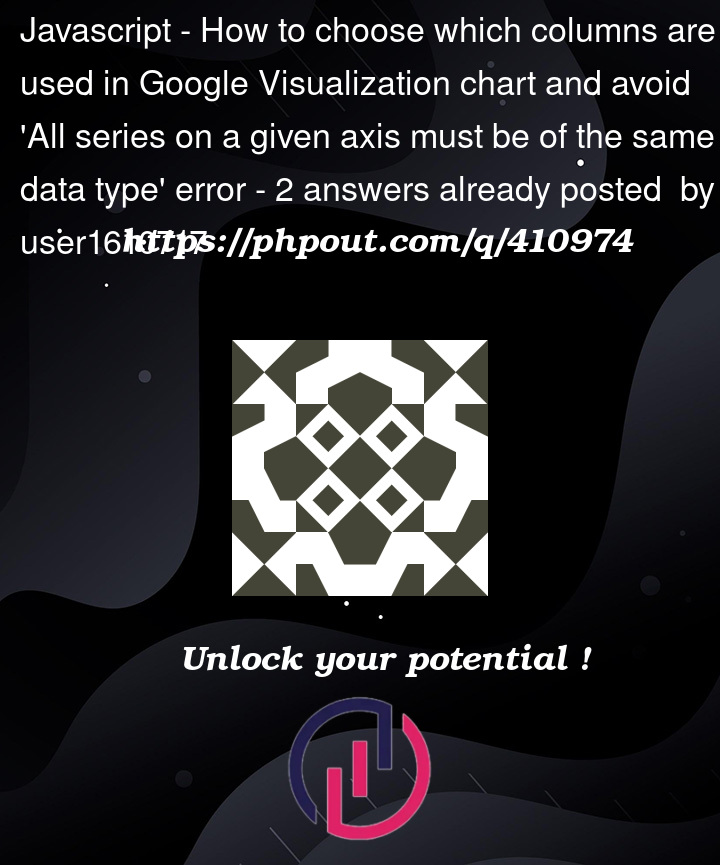I’m trying to use various columns on a spreadsheet to chart running durations and try different styles by using Google Charts. I have problems when I try to query more than 2 columns. I want to use one column (B, for example) for attribution text, or labels, above the points on the graph. But when I use ‘SELECT A, B, D’, I get an error of ‘All series on a given axis must be of the same data type’. How can I query/load multiple columns but only use the ones I choose as series in the chart? It looks like it automatically uses all for a series, so I think it’s trying to plot a string and a date on the x axis. Successful chart (querying just column A and D), spreadsheet, and code are below. Thanks for any help.
I did try to implement the suggestion from this post but without success. I wasn’t sure how to implement it with 3 columns vs. 2. Any help on that end would be much appreciated.
<html>
<head>
<script type="text/javascript" src="https://www.gstatic.com/charts/loader.js">
google.charts.load('current', {'packages':['corechart']});
google.charts.setOnLoadCallback(drawChart);
function drawChart() {
var queryString = encodeURIComponent('SELECT A, D');
var query = new google.visualization.Query(
'https://docs.google.com/spreadsheets/d/1xRV24c1itTkK1OWLo3KdpVhkjXpuMzi8lXi4UFHanso/gviz/tq?sheet=Sheet1&headers=1&tq=' + queryString);
query.send(handleSampleDataQueryResponse);
}
function handleSampleDataQueryResponse(response) {
if (response.isError()) {
alert('Error in query: ' + response.getMessage() + ' ' + response.getDetailedMessage());
return;
}
var data = response.getDataTable();
var options = {
title: 'L's 2024 Cross Country Run Times ',
width: 900,
height: 500,
trendlines: {
0: {
color: 'blue',
}
},
vAxis: {
format: 'mm:ss'
}
};
var chart = new google.visualization.ScatterChart(document.getElementById('chart_div'));
chart.draw(data, options);
}
</script>
</head>
<body>
<div id="chart_div" style="width: 100%; height: 500px;"></div>
</body>
</html>






2
Answers
This happens because you are trying to use a column with non-numeric values (column B, which has text/labels) alongside numeric data (columns A and D) in the chart.
you can split the columns into two parts: one set for plotting (numeric data only) and another set for labels (text) to avoid type mismatch errors.
i have modified the code already
as you suspected, when you draw the chart directly from the query response, it uses all columns.
the first column is used on the x-axis, and the remaining columns on the y-axis.
but in order to draw annotations, you must include an annotation column role.
this is where the data view comes into play.
with a data view, you can specify a specific role for a column or columns.
here, we select the annotation data (column B) as the last column in the select statement.
then we create the data view, from the data table response, using the last column as the annotation.
see following snippet.
I don’t think it will actually run from a stack overflow snippet,
so here is working example of JSFiddle…
https://jsfiddle.net/WhiteHat/xcdb7o2k/2/